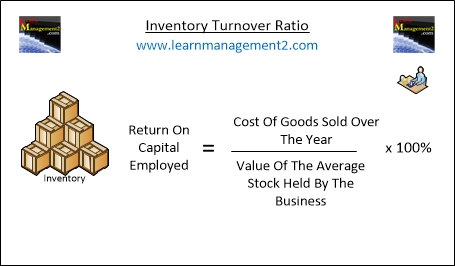
Hello Klent, Because our Payroll System was down when quarterly Payroll Tax was due, I paid the liability via telephone. If I follow the above instructions and change the liability amount in Payroll, how will I enter the payments made by deferred revenue definition phone?? If you need to track where your business stands in terms of employee expenses, you can customize the payroll and employee reports. If you have QuickBooks payroll for Desktop, tracking and paying payroll liabilities can be a quick way to be reminded when your payroll deposits are due and how much is owed. To schedule and pay your federal and state tax liability in QuickBooks, you must first set up your payment schedule.

This article also explains how to use a liability adjustment to correct an employee’s year-to-date information contained in payroll items, such as company contributions, employee addition, and deduction payroll items. You can adjust more than one liability at a time during one liability adjustment transaction by selecting the payroll items in the payroll item column provided. If you need to make adjustments for more than one period, then you must use a separate adjustment transaction for each period. Make sure that the adjustments are correct by selecting the appropriate reports when finished.
How To Track, Record and Pay Payroll Liabilities in QuickBooks Desktop
To do this, go to Employees then Payroll Taxes and Liabilities then Pay Scheduled Liabilities. If you use QuickBooks Desktop Payroll Assisted, contact us if you need to make an adjustment for a previously filed tax form or payment. The steps shared by Klent are also applicable for payments made via phone calls. You can enter a short description in the Memo column of what the entries are for. Employee adjustments are used to change an employee’s year-to-date information. Most businesses must submit their last month’s payroll deductions to the Canada Revenue Agency (CRA) by the 15th of the current month.
Common scenarios that can be corrected by a liability adjustment
Similarly, if a new tax law is enacted, it may lead to adjustments in tax calculations and withholdings. In this comprehensive guide, we will explore how to adjust payroll liabilities in QuickBooks, QuickBooks Online, and QuickBooks Desktop. From identifying the need for adjustment to making necessary changes in payroll setup and reconciling liabilities, we will cover the essential steps and best practices for each scenario. You can create a new payroll item or edit your addition, deduction or company contribution items to track expenses by job. Most common pay items and tax types are set up automatically during the initial payroll setup. Annual limits such as the Social Security tax wage liability financial accounting limit update automatically at the start of each year.
- Reconciling any discrepancies between the adjusted liabilities and the original records is essential to maintain accurate financial reporting.
- Once the discrepancies are reconciled, the adjusted payroll liabilities and tax amounts can be accurately entered into QuickBooks Online, ensuring that the financial records reflect the updated information.
- It is critical to consider the implications of these changes, including potential impacts on employee paychecks, tax filings, and financial reporting.
- When your payroll liabilities are incorrect, you can do a liability adjustment to fix them.
Your projects are processes,
If the Installments-Payroll account has an amount remaining at year-end, confirm with your tax agency if the remaining amount will be carry-forward to the next year. If the Installments-Payroll account has a balance owing (a negative amount), you may need to remit the balance to the tax agency. Hawkins Ash CPAs uses an external secure online pay platform for accepting payments.
Reconciling any discrepancies between the adjusted liabilities and the original records is essential to maintain accurate financial reporting. So, let’s dive into the specifics of adjusting, reconciling, and entering payroll liabilities in QuickBooks to ensure accurate financial reporting and compliance with accounting standards. Adjusting payroll liabilities in QuickBooks involves making changes to the recorded amounts of various payroll obligations and ensuring that the financial records accurately reflect the current liabilities and taxes owed. Subsequently, it is essential to navigate to the payroll setup within QuickBooks Online and implement the required changes, which may involve modifying tax categories, updating withholding rates, or adjusting employer contribution parameters.
Setting up on creative accounting payroll liabilities in QuickBooks Desktop involves configuring tax categories, defining payment schedules, and establishing employee contribution parameters to ensure accurate tracking and reporting of the company’s payroll obligations. Subsequently, it is essential to navigate to the payroll setup within QuickBooks and implement the required changes, which may involve modifying tax categories, updating withholding rates, or adjusting employer contribution parameters. Once the discrepancies are reconciled, the adjusted payroll liabilities and tax amounts can be accurately entered into QuickBooks Online, ensuring that the financial records reflect the updated information.
Learn how to use a liability adjustment to correct employees’ year-to-date (YTD) or quarter-to-date (QTD) payroll info in QuickBooks Desktop Payroll. Now that we’ve corrected your payroll records, I suggest you get in touch with the state agency. One of their specialists will guide you on how to properly handle the situation and make sure your state tax is in order. Adjusting payroll liabilities in QuickBooks Online involves similar steps to the desktop version, with the added convenience of cloud-based accessibility and collaborative functionality for streamlining the adjustment process. If it’s overpaid, check out Resolve a payroll tax overpayment to learn how to handle them.


